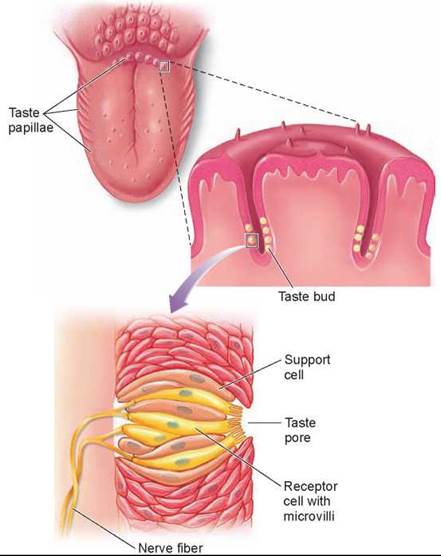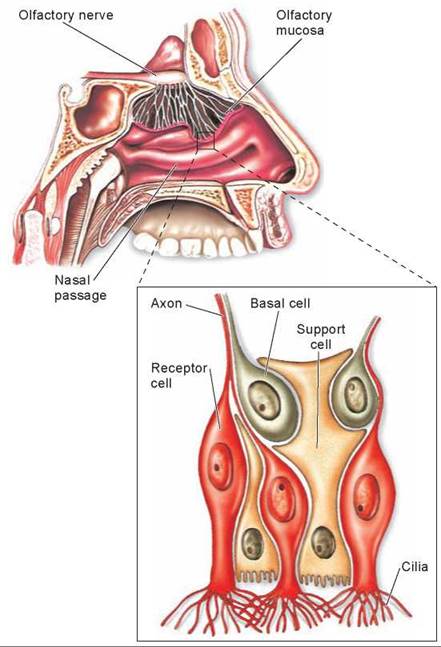THE LIVING WORLD
Unit Six. Animal Life
29. The Senses
29.3. Sensing Chemicals: Taste and Smell
Vertebrates are able to detect many of the chemicals in air and in food.
Taste
Embedded within the surface of the tongue are taste buds located within papillae, which are the raised areas on the tongue in figure 29.5. Taste buds are onion-shaped structures in the enlarged view of the papillae that contain many taste receptor cells, each of which has fingerlike microvilli that project into an opening called the taste pore. Chemicals from food dissolve in saliva and contact the taste cells through the taste pore. Salty, sour, sweet, bitter, and umami (a “meaty” taste) are perceived because chemicals in food are detected in different ways by taste buds. When the tongue encounters a chemical, information from the taste cells passes to sensory neurons, which transmit the signals to the brain.

Figure 29.5. Taste.
Taste buds on the human tongue are typically grouped into projections called papillae. Individual taste buds are bulb-shaped collections of taste receptor cells that open out into the mouth through a taste pore.
Smell
In the nose are chemically sensitive neurons whose cell bodies are embedded within the epithelium of the nasal passage, shown in cross section in figure 29.6. When they detect chemicals, these sensory neurons (the red cells in the enlarged view) transmit information to a location in the brain where smell information is processed and analyzed. In many vertebrates (dogs are a familiar example), these neurons are far more sensitive than in humans.

Figure 29.6. Smell.
Humans smell by using receptor cells located in the lining of the nasal passage. The receptor cells are neurons. Axons from these sensory neurons project back through the olfactory nerve directly to the brain.
Smell as well as taste is very important in telling an animal about its food. That is why when you have a bad cold and your nose is stuffed up, your food has little taste. Other receptors also play a role. For example, the “hot” sensation of foods such as chili peppers is detected by pain receptors, not chemical receptors.
Key Learning Outcome 29.3.Taste and smell are chemical senses. In many vertebrates, the sense of smell is very well developed.